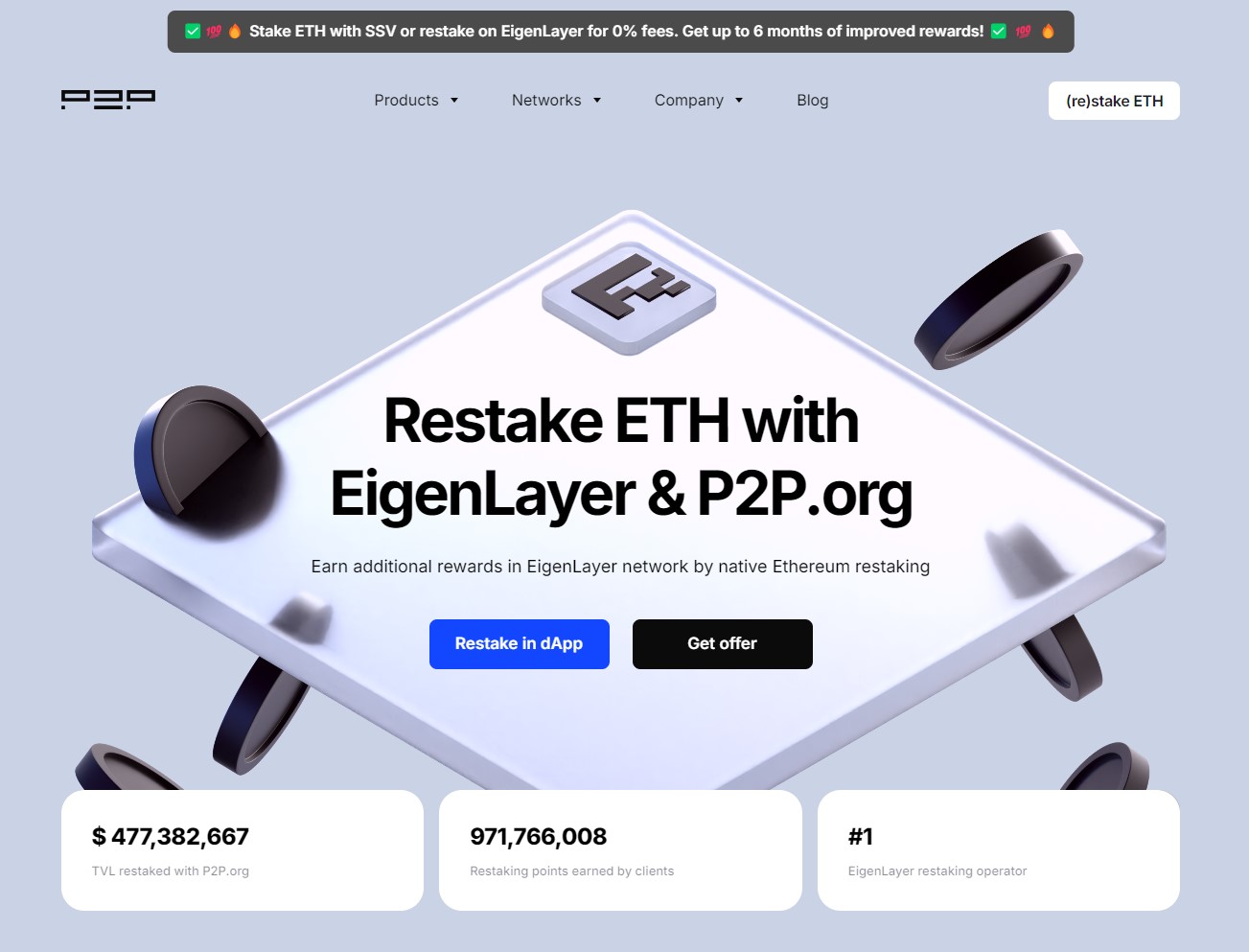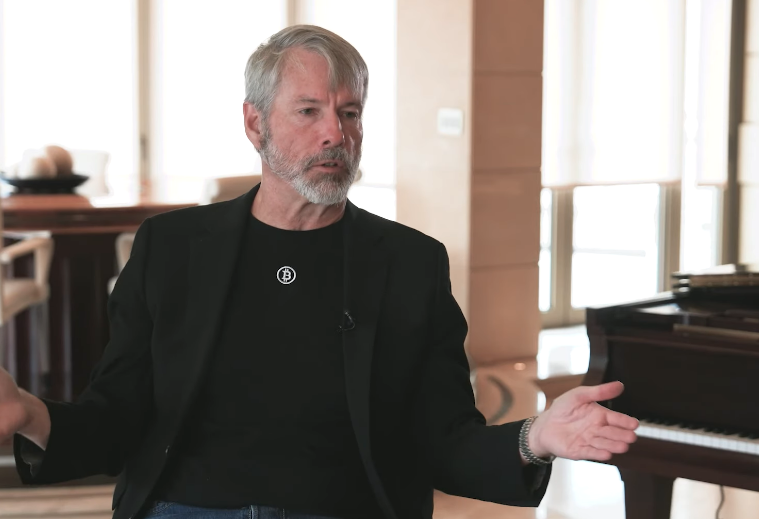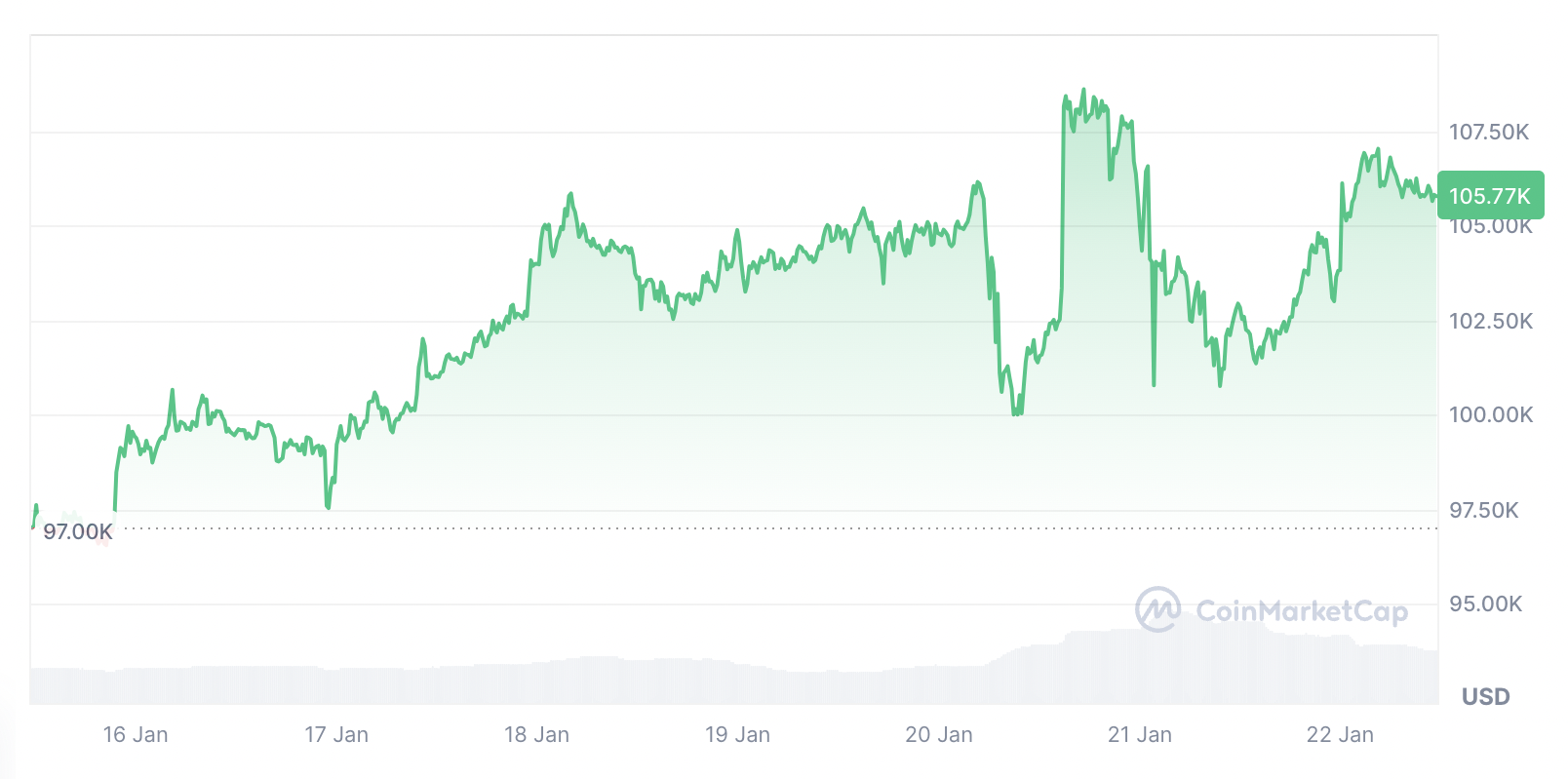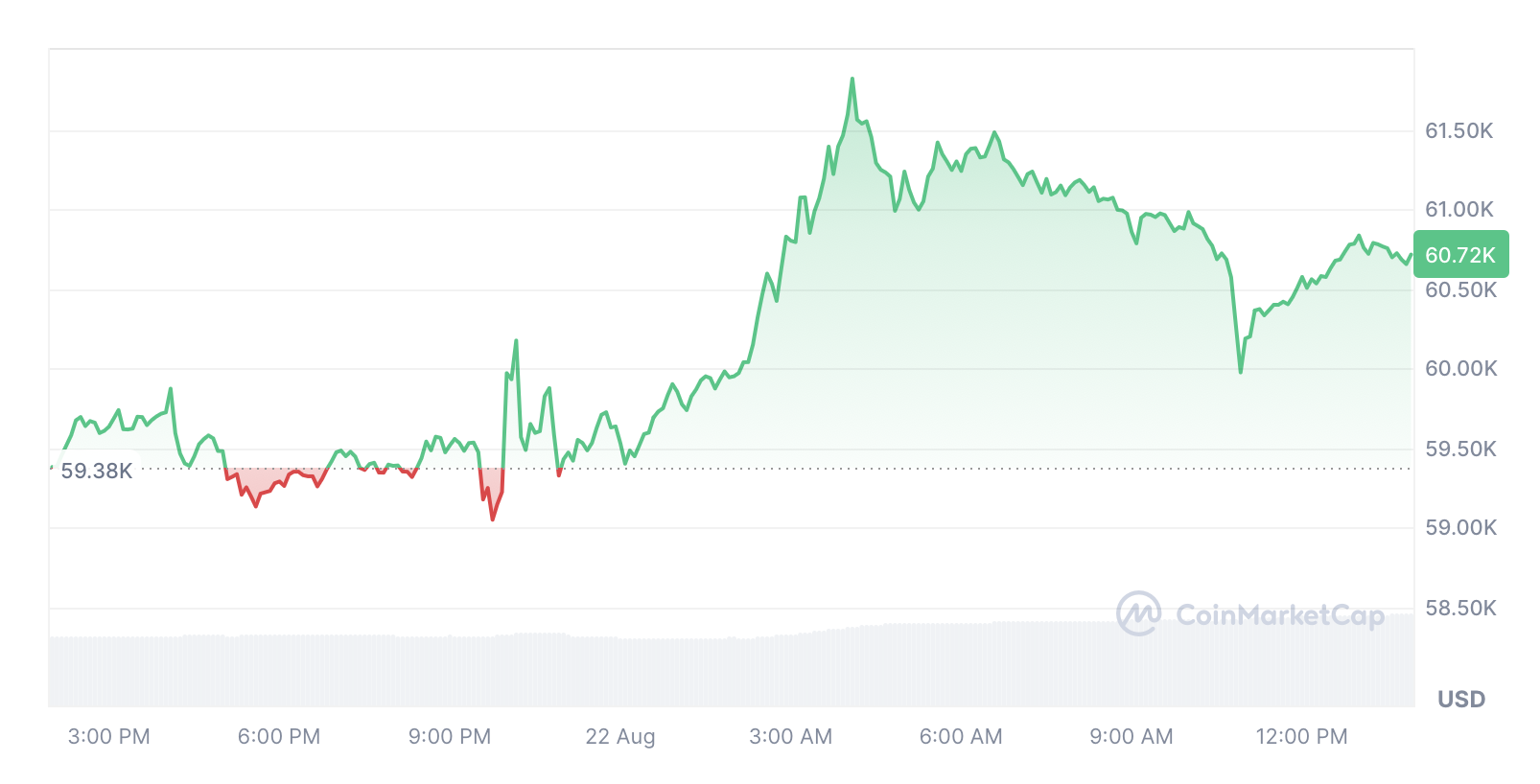EigenLayer operator P2P aims to woo restakers with a revenue-sharing program as competition mounts ahead of a planned boost to restaking payouts, P2P said on Oct. 16.
In September, EigenLayer tipped plans to enhance rewards for restakers with “programmatic incentives” denominated in EIGEN, the protocol’s native token.
“The new revenue initiative is the first of its kind to be rolled out from a staking validator, and it comes as other infrastructure providers prepare to launch their incentive programs,” P2P said in the Oct. 16 statement.
Source: P2P
Related: EigenLayer eyes consumer adoption post EIGEN unlock, founder says
As Ethereum’s largest restaking platform, EigenLayer secures dozens of third-party protocols — dubbed actively validated services (AVSs) — with more than $11 billion of restaked collateral, according to DefiLlama.
Restaking involves taking a token that has already been staked — posted as collateral with a validator in exchange for rewards — and using it to secure other protocols simultaneously.
As the largest of EigenLayer’s professional validators, or “operators,” P2P is responsible for upward of $475 million worth of restaked collateral as of Oct. 15, according to the developer’s website.
It also supports staking for other assets, including Bitcoin (BTC) and Ether (ETH), and commands $7.5 billion in total value locked (TVL), P2P said.
P2P competes with dozens of other operators, including staking-as-a-service providers such as Figment, Blockdaemon and Ankr.
Its revenue-sharing program applies to restakers who delegated to P2P prior to Aug. 15, the company said.
EigenLayer’s TVL. Source: DefiLlama
EigenLayer is prioritizing onboarding users following EIGEN’s Oct. 1 unlock, founder Sreeram Kannan told Cointelegraph in an interview.
The EIGEN unlock was among the most highly-anticipated in 2024 and puts pressure on EigenLayer to scale protocol revenues from AVSs, which will partly accrue to EIGEN stakers.
EigenLayer’s programmatic incentives will reward restakers with EIGEN emissions comprising approximately 4% of the token’s total supply.
“Stakers will get programmatic rewards depending on how many AVSs they serve, and AVSs will pay fees to stakers and operators. The more AVSs pay, the more value gets allocated,” Kannan said.
Magazine: Crypto whales like Humpy are gaming DAO votes — but there are solutions



